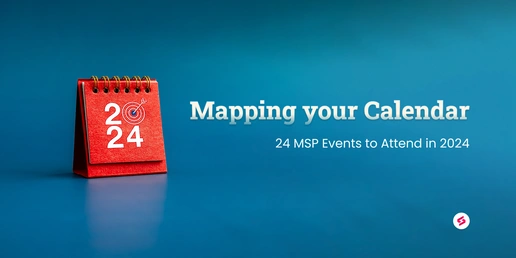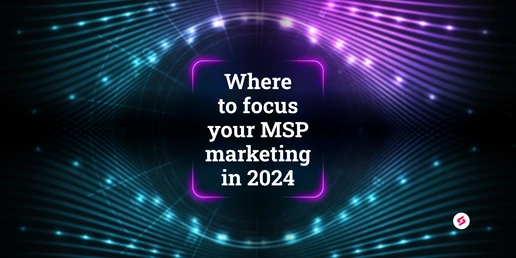Many owners of Managed Service Provider (MSP) businesses come from a technical background. They are frequently engineers that have excelled in their field and have exceptional people skills. It allows them to grow a business organically.
However, when they decide to get serious about building an MSP, they find out that growing the sales pipeline by referral only doesn’t get them the growth or results they want. It’s time to get serious about marketing. Here are six marketing basics for MSPs that you’ll find helpful.
Website
I know this may seem basic, but every MSP needs a quality website. Remember that this represents your brand. Think about why clients need your services and seek to build content on your site that is valuable and answers their most common questions. Make it relevant. Use testimonials and case studies to build trust.
One trap that many MSPs seem to fall victim to in writing content for their website is giving a long list of qualifications and certifications. Business owners are most interested in business outcomes. They want to hear about how your services will solve their problems and benefit their business. If you cater your content to answering those questions as opposed to listing your qualifications, you’ll have a website that will convert interest into leads for your sales team.
One additional element on the site should be the call to action. Once you’ve garnered interest from the users on the site, you need to make it dead simple for them to get in touch. Well-placed contact buttons and interest forms are key to a converting website.
SEO
Once the website is up and running, you need to make sure that people can find it. Search Engine Optimization (SEO) is the way to do it. Essentially you want to set the site up in such a way that Google’s bots can easily identify the key content and what the site is about.
There are a few key elements to SEO. The first is to design your site with SEO in mind from the get-go. That means having a plan for what keywords you want to target and which pages on your website have content tailored to target them. There are other things you can do to improve your on-page SEO, like making sure that you have H1 title tags in place, that the content itself has been optimized to target the desired keyword, and that image alt tags are in place. If you use WordPress, Yoast makes a great free plugin that can help you with this onsite page optimization.
Google ranks sites based on domain authority (DA). Domain authority is determined by various factors, including how many other quality websites link back to your content. The more quality websites that link back to you, the more clout you have with Google and the higher rankings you’ll have. You can build those links by creating awesome content and by strategic outreach to pertinent websites to place content with backlinks to your site.
Related reading: 13 efficient link-building strategies
PPC
SEO can take a while to build up. If you’re looking to get more immediate results Pay Per Click advertising can be a great option. PPC is those first few paid results at the top of Google. You can build out an ad campaign using Google Adwords so that you start showing up in those paid spots immediately.
Campaigns are easy to build and manage. They can be customized to fit budgets of any size. Google even offers an online course you can take to become AdWords certified. It’s inexpensive and helps you get the most out of your ad spend.
Email campaigns
Email Marketing campaigns have been around for years. They still exist because they still work. You should check out tools like MailChimp or iContact for your email marketing. These tools allow you to send out emails to a large group. They come with ready-to-use templates that allow you to build attractive, eye-catching emails quickly. They also allow you to track the results of the mail you send, see how many opens you get, and see if folks are clicking through to other content.
Social media
Social media has become an essential part of a digital marketing plan. LinkedIn is probably the best platform for MSPs, but Facebook and Twitter have value as well. I recommend using a social media aggregator tool like Hootsuite to allow you to post to multiple platforms at once and schedule out those posts ahead of time.
Share valuable tips that your target audience would be interested in. Use social media to spread your brand and point to other useful content pieces such as blog articles or case studies. Engage with communities and find groups that have an interest in business technology solutions.
Outbound calling
This is another oldie but a goldie. Direct outreach has never gone out of style because it works. An outbound calling campaign can be an effective way to qualify leads and set appointments with decision-makers. There are a few companies that do this for the managed services space. A couple of my favorites include Managed Sales Pros and Abstrakt Marketing. Both offer outbound calling campaigns that can get you in front of qualified prospects.
Conclusion
There is a lot to think about when developing an effective marketing plan for your MSP. This is by no means an exhaustive list. There are many ways to get your brand and your message out in front of your target market. Best results are usually achieved when you work multiple channels at a time. Good luck, and happy marketing!




